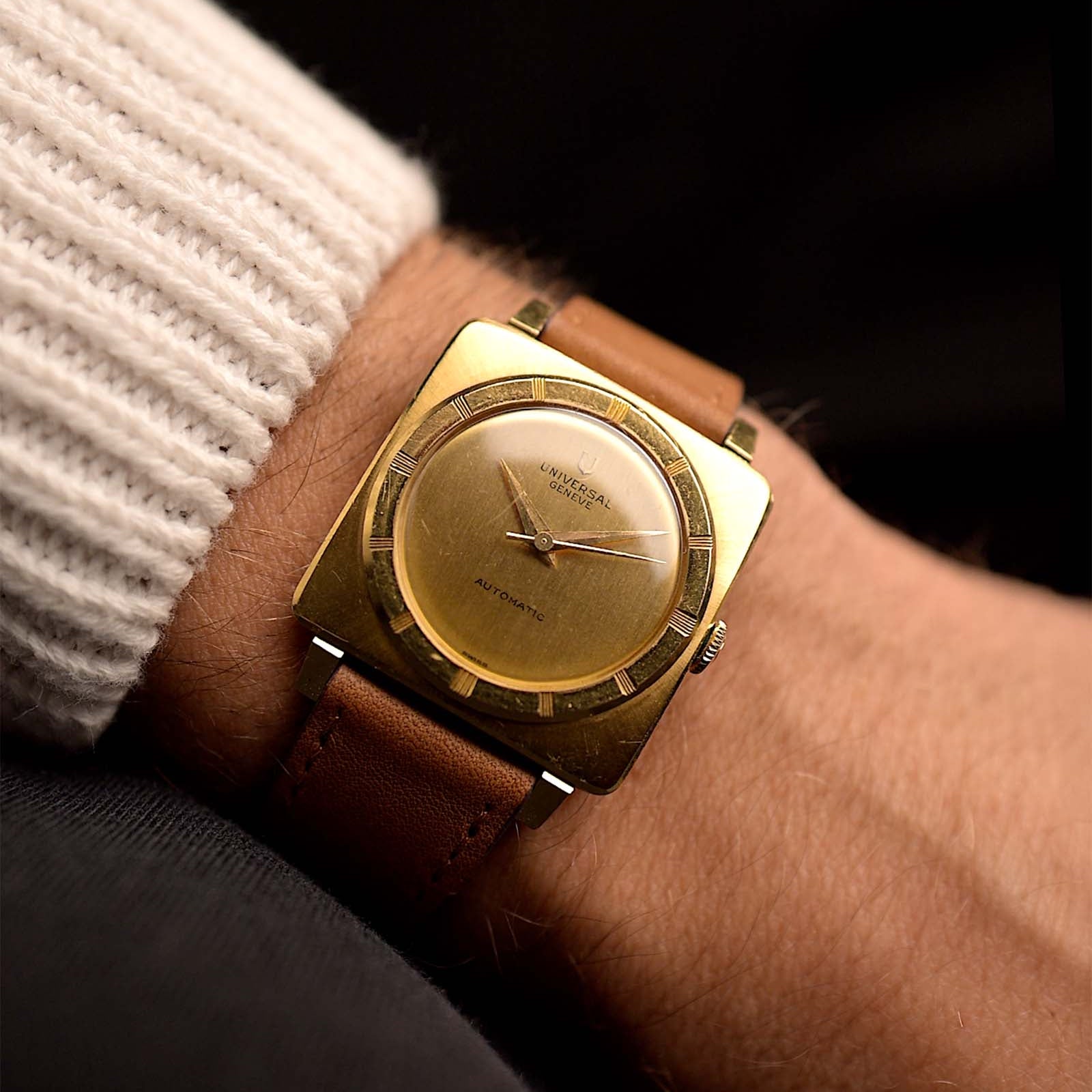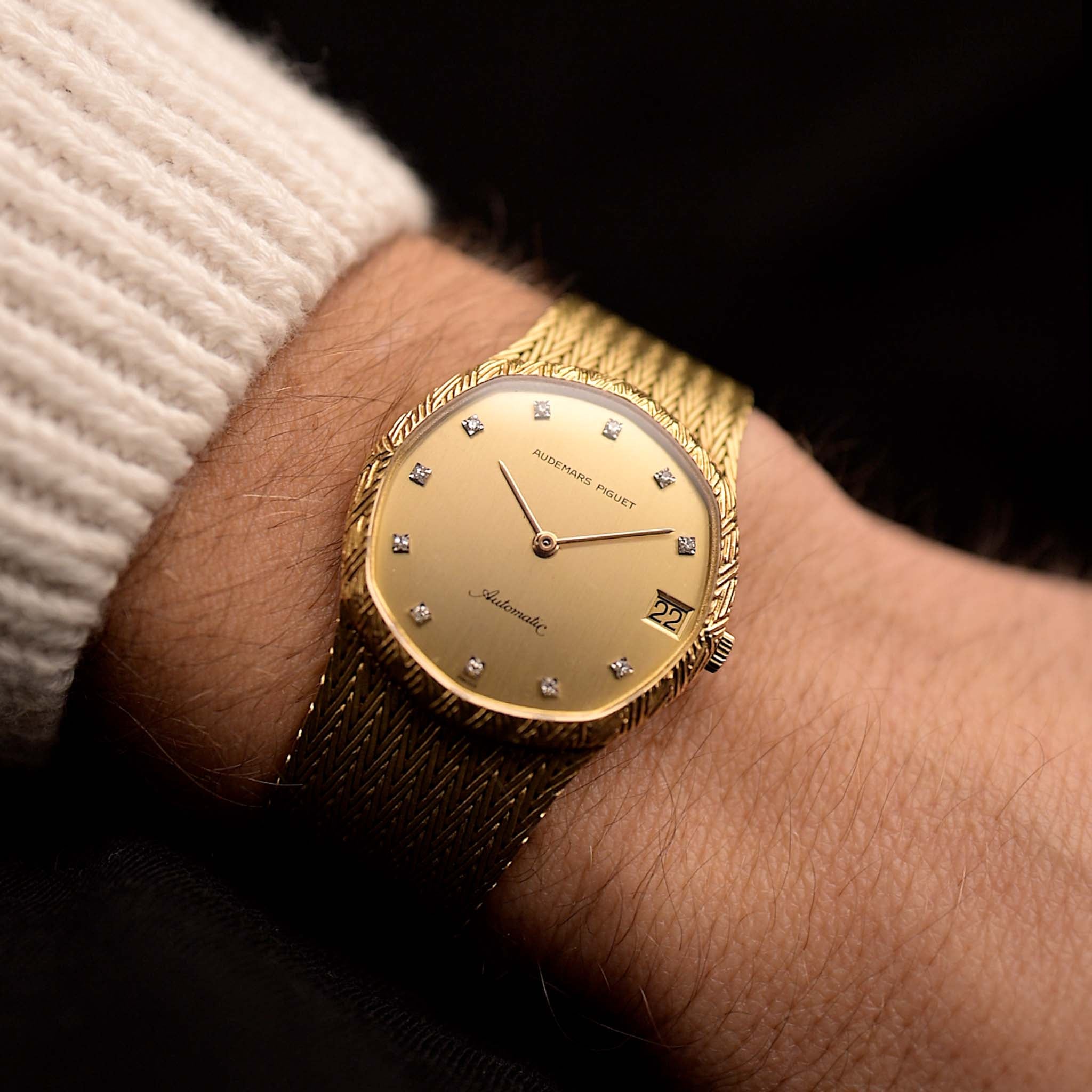The automatic movement - something we consider normal in modern watches - was still an experimental concept during the 1940s. And brands had to work around the gold-standard Rolex patents, which meant they were developing with one hand behind their backs. However, Longines still managed to come up with a relatively new solution in under 2 years. This is nothing short of an engineering miracle! Longines, mainly appreciated for their contribution to the stopwatch complication, may not be famous for their automatic calibers but let's pay respect where respect is due! Longines' heritage is based in technical innovation and clearly eclipses just being Omega's little cousin.
July 24, 2024
The Coup No One Speaks About - Longines First Automatic Movement

Marcus Siems @siemswatches
Collector, Author, Data Analyst
Appreciated by many vintage chronograph collectors, Longines' heritage is a lot more than just being Omega's little cousin. And apart from their contribution to the stopwatch complication the St. Imier manufacturer has been an innovation powerhouse and involved in one of the greatest patent Coups of the last Century...
[Mysterious Music Playing]
 A 1950 Longines ref. 6000 in steel. An automatic watch with cal. 22A made for the French market. But what makes it so special? Photo Courtesy of Antiquorum.
A 1950 Longines ref. 6000 in steel. An automatic watch with cal. 22A made for the French market. But what makes it so special? Photo Courtesy of Antiquorum.
What makes this watch so special? It is a Longines ref. 6000 in steel. Based on the dial signature "Fab. Suisse" and the extract we know it was made for the French market. It features luminous numerals, pencil hands, a stepped case and expressive lugs. Generally, very attractive features but nothing earth-shakingly special so far... What makes this piece a true oddball is the other signature you'll find on the dial: "Automatic".
Now why is an automatic Longines from 1950 newsworthy? Many manufacturers pioneered automatic watches prior to that. The first patent for an automatic wristwatch stems from 1923 and Rolex was mass-producing automatic Bubble-Backs since 1931[1]... So what? Well, that Rolex patent is key: Dating back to 1931 Rolex secured the rights on 360 degree full-rotor movements (the modern standard) for an astonishing 20 years[1]! In other words no other company should be able to commercialize a similar movement until after 1951. Yet, Longines did with their in-house caliber 22A.
 1948 Longines advertorial displaying their first automatic wristwatch with Cal. 22A. The emphasis is interestingly on the sturdy nature of these pieces as well. Photo Courtesy of HIFI Archiv.
1948 Longines advertorial displaying their first automatic wristwatch with Cal. 22A. The emphasis is interestingly on the sturdy nature of these pieces as well. Photo Courtesy of HIFI Archiv.
1) Longines Caliber 22A
Supposedly, Longines only had a very short development phase and a low budget to make their automatic dreams reality[2]. In 1944 - when most manufacturers already established, improved and sold their automatic movements - Longines started from scratch. The idea was to build a movement that wasn't relying on anything that already existed in their catalogue but that would learn from the mistakes and shortcomings of other automatic ebauches.
A mammoth task but Longines succeeded: Less than two years later Longines first automatic wristwatch movement - the caliber 22A - was launched publicly in Spring of 1946. And already in late 1945 6 initial prototypes were tested internally[2] - starting with movement serial No. 6,999,999.
 Getting up close with a Longines automatic cal. 22A from the early 1950s. As you can see this is a full-rotor winding system! Photo Courtesy of Josh Rankin of Stetz Co. Watches.
Getting up close with a Longines automatic cal. 22A from the early 1950s. As you can see this is a full-rotor winding system! Photo Courtesy of Josh Rankin of Stetz Co. Watches.
As you now also can see with your own eyes the caliber 22A features a full-rotor winding system! The 22A is an 18 jewels, 28.8mm diameter x 5.7mm height movement with 36h of power-reserve. Thus, between 1946 to 1952 Longines sold a solid Rolex competitor that seems to be patent infringement... unless?
 The successor movement to the 22A - the Longines 19A introduced in 1952. Depicted here with center-second (cal. 19AS) inside a 1955 Longines Conquest ref. 9000. Photo Goldammer Archiv.
The successor movement to the 22A - the Longines 19A introduced in 1952. Depicted here with center-second (cal. 19AS) inside a 1955 Longines Conquest ref. 9000. Photo Goldammer Archiv.
2) How did Longines pull that off?
So the elephant in the room is: "was all of this legal or did Longines suffer any repercussions"? Now to understand how this was possible we have to get down to the very nitty gritty details of the rotor movements*. Luckily our friend Owen Lawton wrote a great overview over all the relevant Rolex patents some time ago.
Rolex protected the oscillating mass (CH160803A) and the related energy transmission system (CH157995A) to wind the mainspring. These are the patents that led to the initial caliber 620 in 1931 and revoked most manufacturers from launching their own full-rotor movements. But interesting is what wasn't covered under these patents...
 Rolex patents for the full-rotor oscillating mass ( CH160803A, left) and the energy transmission ( CH157995A, middle) that led to the Rolex caliber 620 (right) in the early 1930s. Photos Courtesy of WindVintage and Owen Lawton.
Rolex patents for the full-rotor oscillating mass ( CH160803A, left) and the energy transmission ( CH157995A, middle) that led to the Rolex caliber 620 (right) in the early 1930s. Photos Courtesy of WindVintage and Owen Lawton.
The original Rolex patent that was granted in 1933 only covered uni-directional winding. This means that rotation in only one direction was able to wind the mainspring. Rolex managed to protect a bi-directional winding system in 1934 as well but didn't commercialize the system until the introduction of their cal. 1030 in 1950[1].
The bi-directional aspect might be key to solve this puzzle. Similar to Longines the ebauche manufacturer Felsa launched a full-rotor movement (cal. 692) in 1942 with bi-directional winding[1]. The Longines patent (CH251175A, June 23 1945) directly tackles this bi-directional winding itself by separate wheels for both directions[3]. Importantly, on November 29 1945 Longines registered another patent that might be crucial. Their patent CH254577A protects a system to dampen lateral shocks to the oscillating weight with springs[4].
 "The maximum of security" is the headline for Longines' automatic watches during the 1940s. It is a great feature to advertise but potentially also the characteristic that relieves them from patent infringement... Photo Courtesy of HIFI Archiv.
"The maximum of security" is the headline for Longines' automatic watches during the 1940s. It is a great feature to advertise but potentially also the characteristic that relieves them from patent infringement... Photo Courtesy of HIFI Archiv.
Thus, the shock-absorbing oscillator in combination with the bi-directionality might have been enough to make this Longines caliber a clever development that wasn't infringing Rolex directly. It is also extremely interesting to see that 1940s Longines advertisements for their automatic watches strongly highlight the sturdiness and shock-resistant features of their automatic wristwatches. 1940s advertorials almost always read:
"[...] A double protection system absorbs the most violent shocks; it handles efficiently the oscillation mass suspension and the balance wheel. [...]"
 a 1950 vintage Longines automatic wristwatch recently restored and sold directly through Longines. Photo Courtesy of Longines.
a 1950 vintage Longines automatic wristwatch recently restored and sold directly through Longines. Photo Courtesy of Longines.
3) Conclusion
If we put all the puzzle pieces together for the cal. 22A to be launched Longines had to overcome a lack of resources, time and in-house knowledge as well the intricacies of 1930s/40s patent law. To me it is extremely fascinating to see that one of the most established manufacturer of the time went this way. Because if you think about it, the main competitors outside of Rolex all used bumper-style movements. Omega, Universal Geneve, Jaeger-LeCoultre, Movado all went down the bumpy road around the full-rotor approach to built their own automatics.
 Six example automatic movements from the 1940s and 1950s with full-rotor winding (left, Longines & Rolex) and bumper-style winding (middle & right, Universal Geneve, Omega, Jaeger-LeCoultre & Movado). Photos Courtesy of WindVintage & Owen Lawton, Hodinkee, Josh Rankin & Stetz Co. Watches, & the Goldamer Archives.
Six example automatic movements from the 1940s and 1950s with full-rotor winding (left, Longines & Rolex) and bumper-style winding (middle & right, Universal Geneve, Omega, Jaeger-LeCoultre & Movado). Photos Courtesy of WindVintage & Owen Lawton, Hodinkee, Josh Rankin & Stetz Co. Watches, & the Goldamer Archives.
I know this is a predominantly nerdy write-down of a super niche topic... but it also tells you something about the landscape of watch development of the 1940s and 1950s. The automatic movement - something we consider normal in modern watches - was still an experimental concept. And to workaround the Rolex patents made it all but easy to establish this new concept of an automatic wristwatch.
Think about it this way, while manufacturers had to develop with one hand behind their backs Longines still managed to come up with a relatively new solution in under 2 years. This is nothing short of an engineering miracle! Longines may not be famous for their automatic calibers but let's pay respect where respect is due!
* I should state in all clearness that I have close to zero knowledge on patent law or law in general. All aspects stated here stem from my naive understanding of the patent descriptions.
References
[1] How Rolex Became Rolex: The Automatic "Perpetual" Movement (Part 2); Owen Lawton, WindVintage [Link]
[2] The Evolution of Longines' Automatic Calibers - 22A; WatchTalk Forums [Link]
[3] Automatic winding mechanism for watch movements by means of an oscillating weight (CH251175A); Longines Patent (applied 23.06.1945) [Link]
[4] Method for at least damping the lateral shocks exerted on the pivots of the oscillating weight of an automatic winding watch and device for implementing this method (CH254577A); Longines Patent (applied 29.11.1945) [Link]
All rights on text and graphics reserved to the Author.




























Leave a comment